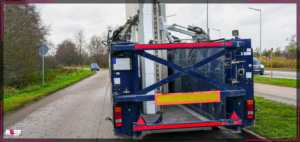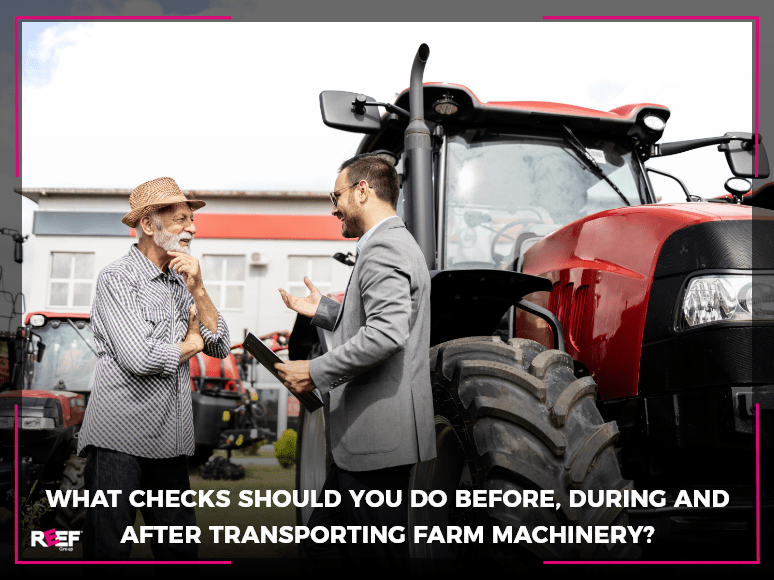Choosing the right low loader for your transportation needs

Enhancing Trade Efficiency: The Role of Logistics in Streamlining Import/Export Processes
March 18, 2024
Preparing Machinery Before Transport? Here’s What You Need to Know
June 10, 2024
If you’re in the construction, agriculture or mining sector, you’ve probably seen a low loader or drop deck truck in action. Low loaders work by providing a platform close to the ground for transporting heavy or oversized loads. These vehicles typically feature a flatbed deck with a low clearance height which enables easy loading and unloading of large equipment or machinery.
The cargo is loaded onto the low loader using ramps or hydraulic lifting and then secured using tie-down points to ensure stability during transit. The low centre of gravity and carefully designed axle improves stability and maneuverability, allowing for safe transportation over all types of surfaces. Low loaders are an essential tool in heavy hauling operations that ensure efficient and secure transportation of large loads.
Key factors to consider when selecting a low loader
Choosing the right low loader for your transportation needs is of the utmost importance to ensure performance, safety and efficiency. By carefully considering the factors below, you can choose the best low loader to meet your objectives effectively and efficiently.
Choosing a vehicle that suits your route
Maneuverability and accessibility are important features to consider when choosing the most suitable low loader. Be sure to account for road conditions and the type of terrain, as well as accessibility at your loading and off-loading points when selecting your low loader. By selecting features that increase maneuverability, such as steering axles and hydraulic ramps, you can increase your efficiency and safety.
Consider your cargo
You should consider your most regular cargo type and sizes to ensure you’re choosing the right vehicle. Be sure to check your cargo’s dimensions, weight, and fragility, as this will influence the kind of low loader you require. Make sure that your cargo matches the load capacity specifications of your low loader, as well as taking into account dynamic or static loads.
Vehicle aspects that will work for you
Trailer length and deck height need to be suited to the type of cargo you are planning on moving. A longer trailer can accommodate longer cargo, while a lower deck can offer better stability and clearance for loads with more height. As discussed in cargo type and size, knowing the dimensions and weight of your cargo will help you select the correct trailer length and deck height.
Axle configuration is another important factor to consider when selecting your low loader. Weight, stability and maneuverability are all important factors to consider when choosing the number of axles needed.
Taking safety into consideration
Look for features that ensure you meet the road safety laws in your state or territory and also interstate restrictions if you plan to move across borders. The right reflective markings, adequate lighting for visibility and powerful braking systems that can handle road elevations are an excellent place to start when considering the safety of your drivers and cargo.
Types of Low Loaders
Now that we have discussed some key factors to consider when choosing your low loader, let’s dive into some of the models available.
Fixed-Neck Low Loader
This type of low loader has a fixed front section, making it suitable for transporting mostly standard-sized cargo. It provides stability and is often used for hauling construction equipment and machinery.
Detachable Gooseneck Low Loader
These low loaders feature a detachable front section, commonly referred to as a gooseneck or a swan neck, allowing for easier loading and unloading of long or heavy equipment. The detachable design helps with access to the cargo and improves maneuverability.
Extendable Low Loader
Extendable low loaders have adjustable deck lengths, allowing them to accommodate various cargo sizes. They are versatile and can be extended or retracted to meet specific transportation requirements, making them suitable for hauling oversized loads.
Modular Low Loader
Modular low loaders consist of separate units or modules that can be connected or disconnected to adjust the length and capacity of the trailer. This modular design offers great flexibility, making it ideal for transporting large or irregularly shaped cargo.
Hydraulic Low Loader
Hydraulic low loaders include hydraulic lifting mechanisms for raising and lowering the deck height, facilitating easy loading and unloading of heavy equipment.
Telescopic Low Loader
Telescopic low loaders have adjustable deck lengths that can be extended or retracted hydraulically. This design allows for easy customisation of the trailer length to handle different cargo sizes while maintaining stability and maneuverability.
Self-Propelled Modular Transporter (SPMT)
SPMTs are specialised low loaders with multiple axles and individual hydraulic steering systems. They can transport extremely heavy or oversized loads by distributing the weight evenly across the axles and maneuvering independently. SPMTs are often used for transporting large machinery.
Low loaders can be used to transport all manner of equipment or machinery, and choosing the correct low loader for your transportation needs can be a daunting task. Check out Reef Group services for further information to help you choose the right low loader for the job.


